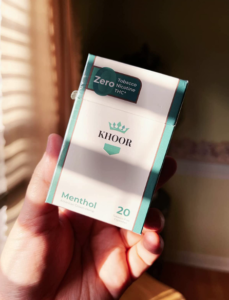
Herbal Smoking Wellness: All You Need to Know
Explore the benefits and tips of herbal smoking wellness with information on health impacts, botanical choices, and DIY blends.

Hemp, a species of the Cannabis sativa plant, has been a staple crop in many cultures for thousands of years, and its versatility is unmatched. From textiles and food to paper and fuel, hemp has a wide range of uses. However, despite its many benefits, hemp was banned in the United States in the 20th century as part of the anti-marijuana campaign.
In recent years, hemp has seen a resurgence in popularity, with its legalization at the federal level in 2018 as part of the Farm Bill. The legalization of hemp has opened up new opportunities for farmers and businesses across the country, and its growth and use is only expected to increase in the coming years.
The history of hemp in the United States is long and complex. In the early days of the country, hemp was an important crop, grown by farmers from George Washington to Thomas Jefferson. It was used for rope, textiles, and paper, among other things. However, the rise of synthetic fibers and increased competition from overseas led to a decline in the use of hemp in the early 20th century.
The marijuana tax act of 1937 marked the beginning of hemp’s ban in the United States, as it was associated with its close relative, marijuana. The ban was later reinforced by the Controlled Substances Act of 1970, which classified hemp as a Schedule I drug, alongside marijuana and heroin.
The ban on hemp had a significant impact on the country, both economically and environmentally. The use of synthetic fibers and paper products, which are less sustainable and more harmful to the environment, became the norm. Additionally, the ban prevented farmers from growing hemp and led to the loss of thousands of jobs.
The legalization of hemp in 2018 marked a turning point in the history of hemp in the United States. The Farm Bill, which was signed into law by President Trump, defined hemp as a plant with less than 0.3% THC and removed it from the list of controlled substances. This paved the way for farmers to grow hemp and for businesses to start producing hemp-based products.
Additionally, the legalization of hemp has created new avenues for agricultural and medical research and development. CBD, a substance found in hemp, is being studied by researchers for its potential to treat a variety of illnesses, including as anxiety, pain, and epilepsy. Hemp can be grown as a rotation crop in agriculture, enhancing soil health and boosting crop yields.
Since its legalization, hemp has seen a surge in popularity, with farmers planting over 500,000 acres of hemp in 2019, up from just 78,000 acres in 2018. The hemp industry is expected to reach $22 billion by 2022, and the demand for hemp-based products is only expected to increase in the coming years.
The growth of the hemp industry has been a boon for the American economy, creating jobs and generating revenue for farmers and businesses. Hemp can be used to produce a wide range of products, including textiles, building materials, biofuels, and food. In fact, hemp seeds are a rich source of protein and are often used to make non-dairy milk, protein powder, and other plant-based foods.
One of the most significant benefits of hemp is its sustainability. Unlike many other crops, hemp can be grown without the use of pesticides and herbicides, making it an environmentally-friendly option. Additionally, hemp has deep roots that help to prevent soil erosion and can be used to clean up contaminated soil.
The growth of the hemp industry has not been without its challenges, however. One of the biggest challenges facing farmers and businesses is the lack of clear regulations regarding hemp production and use. The Farm Bill legalized hemp at the federal level, but individual states are free to impose their own regulations. This has led to confusion and inconsistency in the industry, and many businesses and farmers are still waiting for clear guidance from the government.
Another challenge facing the hemp industry is the lack of access to banking services. Because hemp is still considered a Schedule I drug in many states, banks are hesitant to do business with hemp-related companies, making it difficult for these businesses to access loans and other financial services. This has made it harder for small and medium-sized businesses to compete with larger corporations, and has hindered the growth of the industry as a whole.
Despite these challenges, the future of hemp in the United States is bright. The demand for hemp-based products is only expected to increase, and new uses for hemp are being discovered all the time. The growth of the hemp industry has the potential to create jobs, generate revenue, and support sustainable agriculture, and it is an important step towards a more sustainable future.
In conclusion, hemp has come a long way in the United States, from being banned to being a multi-billion-dollar industry. Its legalization has opened up new opportunities for farmers and businesses, and its many uses make it an important crop for a sustainable future. As the industry continues to grow and evolve, it is important that the government provides clear regulations and support to ensure its success. With the right policies in place, hemp has the potential to become a major player in the American economy and help to build a more sustainable future for all.
“Hemp History and Uses” – National Hemp Association
“The Complicated History of Hemp in America” – History.com
“The Agricultural Act of 2018: What it Means for Hemp and CBD” – Harvard Law School
“The Many Uses of Hemp” – Ministry of Hemp
“Hemp is Potentially the Best Rotation Crop for Beating Pests, Disease and Erosion” – Smithsonian Magazine (https://www.smithsonianmag.com/innovation/hemp-potentially-best-rotation-crop-beating-pests-disease-and-erosion-180975640/)
“Challenges for the Emerging Hemp Industry: NC State Extension” – North Carolina State University
“Why Hemp Could Be The Future Of Farming In The United States” – Forbes )
SHARE ON SOCIAL!

Explore the benefits and tips of herbal smoking wellness with information on health impacts, botanical choices, and DIY blends.

Explore how KHOOR supports nicotine replacement with herbal cigarettes, success rates, and user stories for a healthier, smoke-free life.

Explore the benefits of quitting tobacco & nicotine with healthy alternatives. Improve your health and well-being with tips and data-backed advice.

Achieve your quit smoking goals with KHOOR’s supportive approach. Discover benefits, statistics, and practical tips for a healthier life.

Explore practical tips to smoke without nicotine, including product recommendations and real-life statistics to support your healthier lifestyle choices.

Explore tobacco-free alternatives with KHOOR. Learn about options like herbal cigarettes, nicotine pouches, and vaping for a healthier lifestyle.